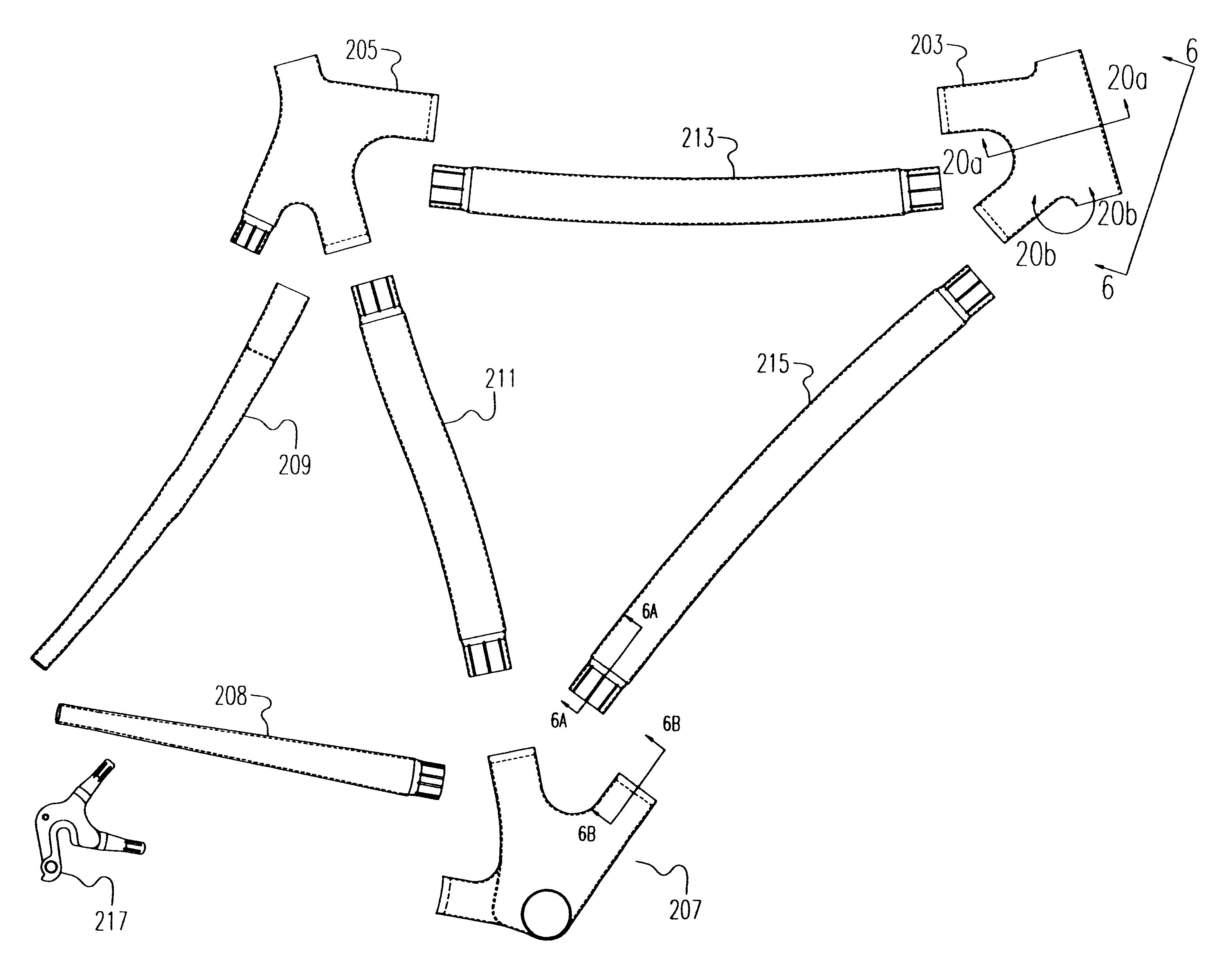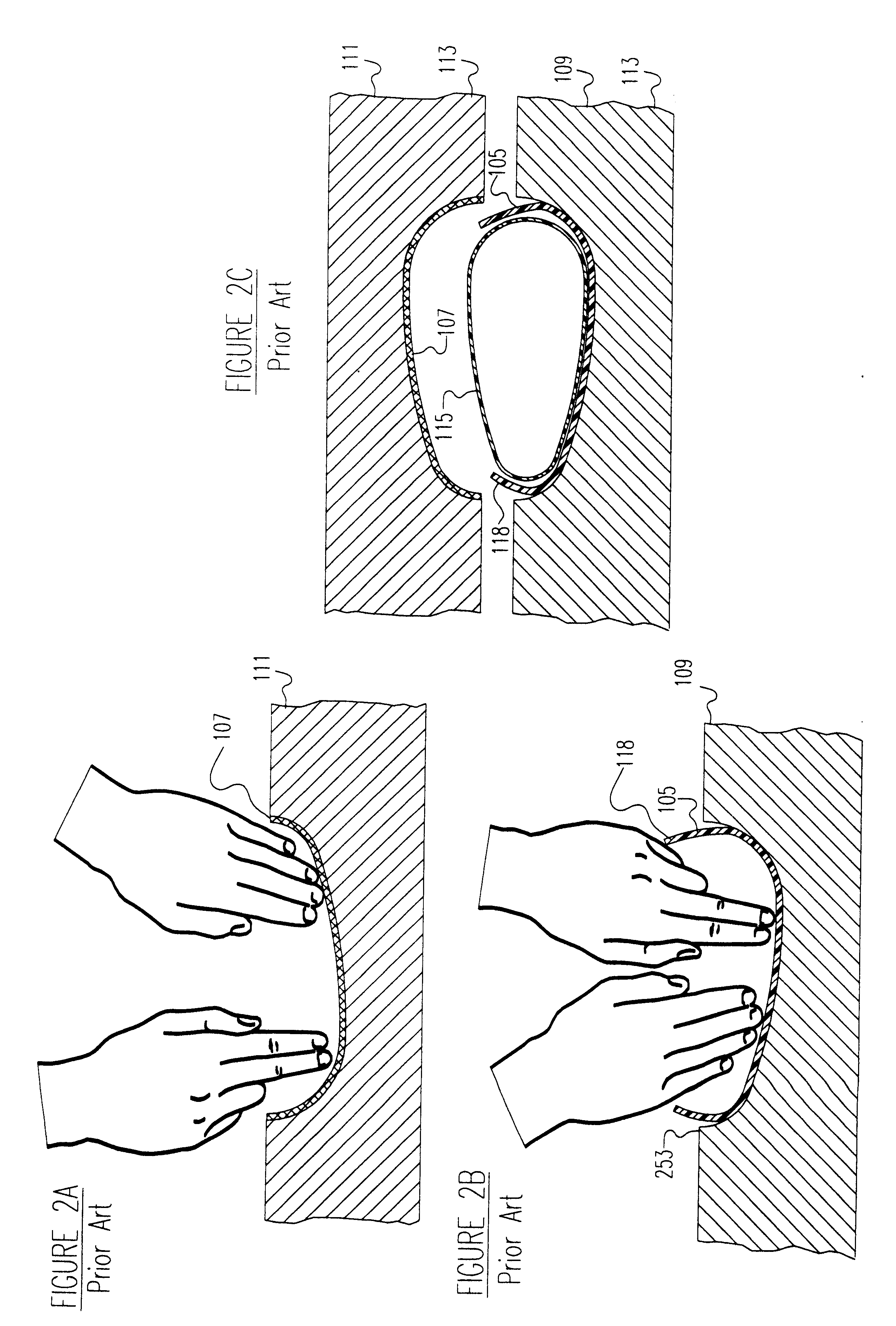Composite bicycle frame and method of construction thereof
a bicycle frame and composite technology, applied in the field of metal bicycle frames, can solve the problems of corresponding frame strength loss, inability to manufacture in mass quantities, and inability to use composite tubes and metal lug combinations according to these known processes, so as to avoid the extra weight and strength reduction
- Summary
- Abstract
- Description
- Claims
- Application Information
AI Technical Summary
Benefits of technology
Problems solved by technology
Method used
Image
Examples
Embodiment Construction
201 jointed or "lugged" tubular bicycle frame
203 head tube lug
205 seat tube lug
207 bottom bracket lug
208 chain stay tube
209 seat stay member
211 seat tube
213 top tube
215 down tube
217 metallic drop out
219 plug on down tube
221 socket in bottom bracket lug to accept down tube plug
225 mandrel core
227 flexible bladder
229 inflation fitting opening in bladder
233 thin film sheets of a thermally vacuum formed bladder
234 thin film sheets of a bladder made from flat film not thermally vacuum formed
235 initial heat seals made on bladder prior to insertion of mandrel core
237 area delimited on bladder for final heat seal after mandrel core / s have been inserted in bladder
238 final heat seal on bladder made on bladder after mandrel core / s have been inserted
239 bladder fitting
239a bladder fitting inner sleeve
239b bladder fitting outer sleeve
241 assembly of mandrel core, bladder and bladder fitting
242 mold set
243 mold bottom half
244 wrapped assembly of mandrel core, bladder and bladder fitting
245 mold...
PUM
| Property | Measurement | Unit |
|---|---|---|
| Ratio | aaaaa | aaaaa |
Abstract
Description
Claims
Application Information
 Login to View More
Login to View More - R&D
- Intellectual Property
- Life Sciences
- Materials
- Tech Scout
- Unparalleled Data Quality
- Higher Quality Content
- 60% Fewer Hallucinations
Browse by: Latest US Patents, China's latest patents, Technical Efficacy Thesaurus, Application Domain, Technology Topic, Popular Technical Reports.
© 2025 PatSnap. All rights reserved.Legal|Privacy policy|Modern Slavery Act Transparency Statement|Sitemap|About US| Contact US: help@patsnap.com



